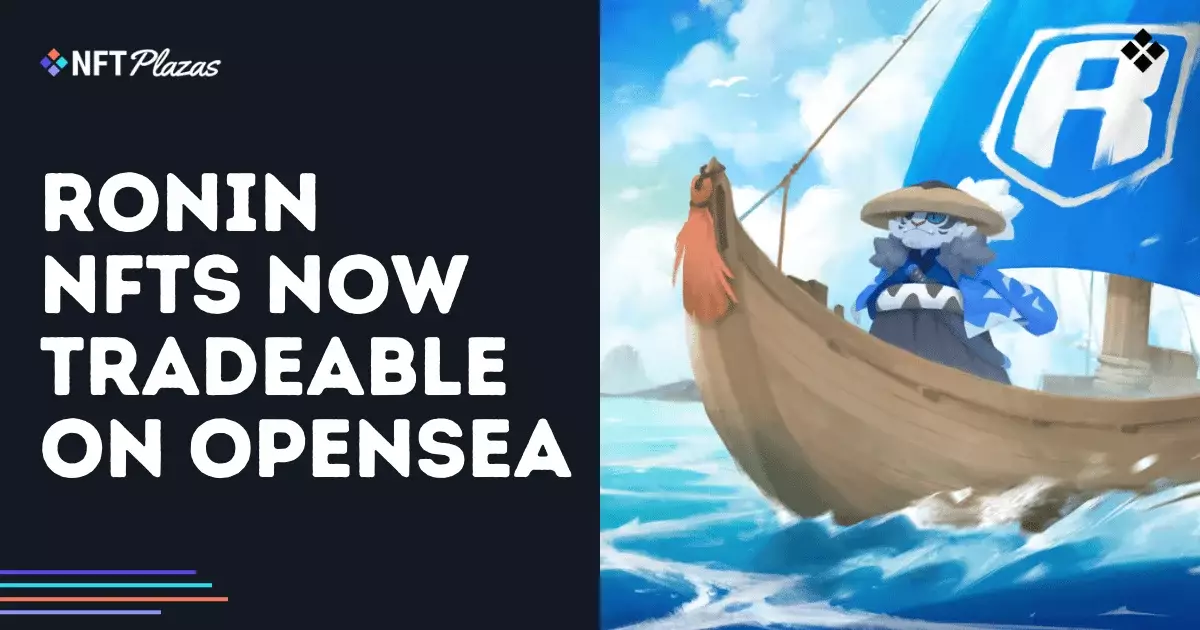The NFT landscape is evolving rapidly, and the recent developments within the Ronin blockchain highlight an exciting shift towards greater accessibility and expansion. The launch of Ronin NFTs on OpenSea is not merely an upgrade; it’s a strategic pivot that enhances the visibility of digital assets in a crowded marketplace. By allowing users with a Ronin Wallet to utilize OpenSea’s comprehensive interface, the integration promises to open new avenues for creators and investors alike.
This is a revolutionary move. Previously, Ronin’s NFT ecosystem was confined to its own marketplace, which limited not only the audience but also the potential trading volume. The alliance with OpenSea is crucial for users looking to increase their reach and liquidity. Consequently, this shift amplifies the potential for creators who had previously struggled to gain traction in a niche market.
Democratizing NFT Creation
One of the game-changing aspects of this integration is the debut of OpenSea Studio. This no-code platform democratizes NFT creation, making it accessible even for those without extensive technical know-how. The emphasis on accessibility is commendable; it aligns with a broader trend towards inclusivity in technology. As someone who advocates for empowering entrepreneurs and creators, I can’t help but marvel at how this could positively disrupt the barriers typically associated with NFT creation.
Now, budding artists and entrepreneurs can mint collections without the fear of navigating complex coding. By simply selecting “Ronin” during the creation process, they can seamlessly launch their NFTs. This is a crucial phase where traditional art meets digital prowess and symbolizes a new dawn where creativity knows no bounds.
Revenue Streams and Ecosystem Sustainability
An equally significant aspect is the financial ramifications of this partnership. With 8% of OpenSea’s platform fees from Ronin-based transactions directed towards the Ronin Treasury, a fresh revenue stream is set to bolster the ecosystem’s long-term sustainability. It’s not just about creating a marketplace for trading; it’s about building a robust economic framework that supports ongoing development and innovation in the Ronin ecosystem.
Sky Mavis has recognized the necessity for sustainable funding, and this approach mimics smart financial strategies found in mainstream businesses. By ensuring that revenue is cycled back into the network, it mitigates risks and promotes longevity. This calculated maneuver places Ronin in a favorable position to weather the inevitable fluctuations of the volatile NFT market.
Royalty Enforcement: A Double-Edged Sword
The integration also raises questions about loyalty enforcement through the split approach adopted for royalty structures. While OpenSea promises to honor royalties on newer token standards like ERC-721C and ERC-1155C, older standards won’t receive the same treatment. It poses a risk of market fragmentation, and users may find themselves navigating complex royalty arrangements across different platforms.
This inconsistency could create challenges for creators who depend on royal earnings for their livelihood. While Sky Mavis indicates plans to rectify this gap, it’s essential to consider the implications of such discrepancies on new and existing creators. Ultimately, for a sustainable ecosystem to thrive, equitable and enforceable royalty systems must be a focal factor.
The Ronin and OpenSea partnership is a bold and groundbreaking shift in the NFT ecosystem, encouraging growth while emphasizing accessibility, financial sustainability, and the need for stable royalty enforcement. It’s a pivotal moment that could redefine how digital assets are created, sold, and valued in a fast-evolving landscape.


Leave a Reply